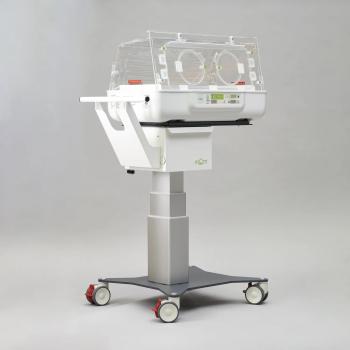
How to express sympathy without receiving a malpractice lawsuit
The conundrum for physicians is how they can express their humanity in this situation without incurring the risk of the patient subsequently attempting to use the physician's statement as evidence of malpractice in a lawsuit.
One of the better human traits is the desire to express sympathy for an individual who is suffering and in pain. This desire is never more present than with a physician wanting to commiserate with a patient who, despite all the physician's best efforts, has had an unexpected adverse outcome. The conundrum for physicians is how they can express their humanity in this situation without incurring the risk of the patient subsequently attempting to use the physician's statement as evidence of malpractice in a lawsuit.
Some states have addressed this situation by passing specific statutes that prohibit the admission into evidence at trial of a physician's expression of sorrow over the patient's plight. Many of these statutes provide only partial protection for such expressions, and there is a large number of states that have no statutory protections at all. This article addresses what physicians need to know to protect themselves against this risk depending on the law, or the lack thereof, in their state.
In all United States courts, there are rules of evidence that regulate what testimony, or other evidence, can and cannot be presented in a jury trial, including a medical malpractice case. These rules uniformly permit testimony to a jury of an "admission" made by a party to the lawsuit during the course of events upon which the lawsuit is based.
For our purposes, an “admission” can be defined as any oral statement by the defendant that is contrary to, or otherwise at odds with, the defendant’s defenses of no wrongdoing, and that actually supports the plaintiff‘s claims of such wrongdoing. Specifically, with a physician in a medical malpractice case, an admission would be any statement that his/her treatment of the patient fell below the accepted standards of medical care.
Obviously, such a statement by a physician can have a nearly determinative impact on a jury's decision that there was malpractice, even when, in fact, no malpractice had occurred. This can easily result in a situation where, for example, the physician did not believe that he or she had engaged in malpractice, did not intend to make any statement that they had, the statement the physician did make was misinterpreted, all the objective facts were of no malpractice and yet the physician is found guilty primarily because the statement was presented to the jury.
To avoid erroneous findings of malpractice in these types of situations, 36 states have enacted “physician apology statutes”. While there are a fair number of differences between these statutes, the essence of them all is that, as a matter of state law, a court cannot permit any testimony, or other evidence, to be presented to the jury that the physician expressed any feelings of empathic or condolences for a patient who, despite the physician’s best efforts, had an unanticipated, adverse outcome.
Ohio is one of the states that has a physician apology statute, and the Ohio Supreme Court recently interpreted the statute in the case of Stewart v. Vivian. For purposes of considering the impact of the Stewart decision, the key difference between these statutes are those that also prohibit the admissibility of any statement by the physician which, in addition to expressing empathy for the patient’s negative outcome, acknowledges that the physician’s treatment of the patient fell below the generally accepted standard of medical care. Those physician apology statutes, which also prohibit the admissibility of such physician acknowledgments, effectively negate the general rule of evidence that admissions by a party to a lawsuit can be presented to a jury.
The core of the decision by the Ohio Supreme Court in Stewart is that Ohio’s physician apology statute prohibits testimony at trial of not only a physician’s expressions of empathy with the patient for an unanticipated, adverse outcome, but also, any acknowledgment that the physician’s care fell below generally accepted standards. In Ohio, and other states with similarly broad statutes, physicians need have little concern that their expressions of sympathy, or otherwise commiserating with a patient and/or family members over an adverse outcome, could be construed as including an acknowledgement of malpractice admissible to a jury.
However, in many of those states that have enacted physician apology statutes, the law expressly permits admissibility to a jury of a physician’s acknowledgement of fault for the adverse outcome. Further, approximately 14 states do not have any such statutes. In both these groups of states, approximately 32 in all, the general rule of evidence on admissions applies. Consequently, in all these states, a physician does need to be very cautious about what he/she says to a patient or a family member, about an unanticipated adverse outcome, lest it be construed as an admission of malpractice admissible to a jury.
Research has shown that a physician who commiserates with his/her patient over such an outcome is far less likely to be sued for malpractice than a physician who does not do so. Such empathy also permits the physician to express his/her humanity to the patient, to be true to the profession’s calling to be healing, both physically and emotionally, when the outcome is not what the patient had hoped-for and to assist the patient and the family to accept this outcome. So, there are many positives for a physician to make such statements in these situations.
In the 32 states that permit the admissibility of physician acknowledgments of below-standard treatment, physicians need to be educated in risk management on how to commiserate with patients and their families without making any statement that a court would consider as an admission of malpractice. Fortunately, because such a statement can have a nearly determinative effect on a jury's decision, courts will generally only permit the admissibility of a clear and unequivocal acknowledgment that the physician’s treatment of the patient was below standard. This provides at least some protection in these 32 states from physicians having innocent, but arguably highly prejudicial statements, being admitted against them, but nothing substitutes for good risk management training on how physicians should handle what they say to patients and their families in these situations.
Besides what to say, how and when to say it and what not to say, a good risk management program also addresses other aspects of how to handle situations of unanticipated adverse outcomes. These include: having at least one witness present who is on the physician’s side when he/she speaks to the patient and/or family members; having available the clinical records that substantiate that what went wrong was a known, unavoidable complication; referring, in a sympathetic fashion, to these records during the conversation and afterward, having the physician and his/her witness document in the clinical record who said what, and what otherwise occurred, during the conversation. Placing the notes of this encounter in the clinical record should ensure their admissibility at trial, if necessary.
In the Stewart case, there was no such documentation, and the court noted that there was irreconcilable testimony by different witnesses of what Vivian had said. Without the physician apology statute, this would have resulted in testimony of both the plaintiff’s and Vivian’s version of the conversation and a finding of no malpractice by Vivian would have been dependent on the jury believing his version. Vivian was saved from having to rely on the jury only because of the wide breath of Ohio’s statute. In the 32 states that do not provide this protection, a physician significantly aides his/her defense by having documentation in the clinical record of the patient encounter that substantiates that the physician, while making sympathetic statements, did not make any acknowledgement of below standard care.
As with so much in medicine, being careful in what you do (or in this case what you say), and then documenting what you carefully did or said, is the golden rule for keeping the plaintiff’s malpractice attorneys from your door.
Newsletter
Stay informed and empowered with Medical Economics enewsletter, delivering expert insights, financial strategies, practice management tips and technology trends — tailored for today’s physicians.








